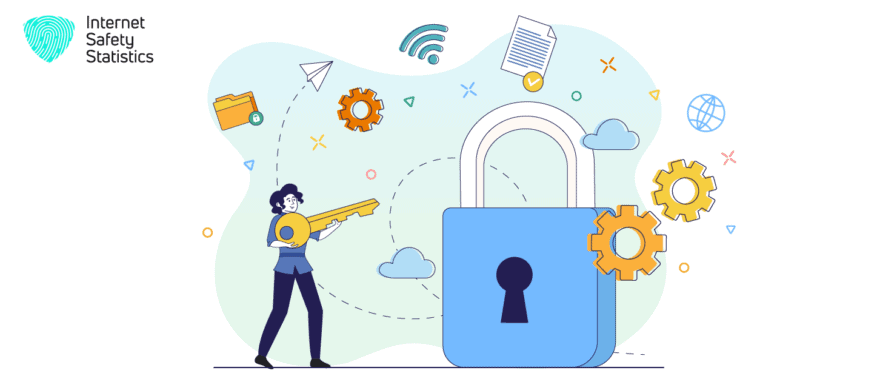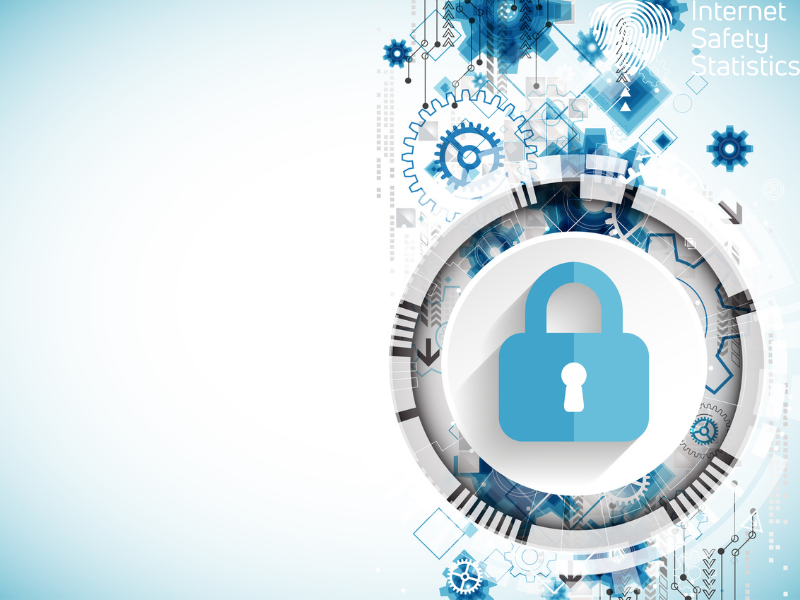
For years, cybersecurity professionals have worked hard to develop encryption methods that can help
secure data when it becomes available online. Such efforts aim to reduce the relentless efforts by
cybercriminals to steal this data and sell it or use it illegally. As more fields of our lives become available
online, the need to encrypt all this sensitive data is vital.
In the past few years, essential data has become available online to accommodate societies’ pressing
need for swift access to information, such as online banking and government services. The biggest surge
in online data availability came during the COVID-19 pandemic when worldwide companies migrated
their databases to cloud services.
The definition of encryption, how it works, its importance and the common methods used for
encryption are our topics for this article. Then, we will discuss how you can create a solid encryption
plan for your data and the future of data encryption as well.
What is Encryption? And How Does it Work?

Encryption is a security mechanism that transforms readable plaintext data into code or unreadable
data before sending it online or backing it up. To have the ability to read this data, you need to have the
encryption key to change the data back to its readable state, which is a process called decryption. Data
encryption is commonly used alongside authentication as a double security firewall to ensure that only
authorised employees can access your data.
There are two main ways of encrypting data:
- Symmetric: where the same key is used for both processes: the encryption and decryption of
data. In this case, you share the encryption key with all authorised users, which they must keep
private from anyone outside your organisation. Symmetric encryption isn’t practical because it
creates serious security vulnerabilities in your system. - Asymmetric: here, you have two keys, an encryption key, shared with everyone so they can
encrypt data in transit or at rest. The second is the decryption key, which isn’t shared with any
users, meaning the key generator is the only one who knows the decryption key. It’s important
to understand that the asymmetric decryption key can only decrypt the data encrypted by the
asymmetric encryption key, which makes it better for commercial use.
Why is Encryption Important?
Encryption is necessary because it allows us to send and receive sensitive data over the internet or store
them away from the prying eyes of hackers. Such data can include sensitive organisation data, personal
data such as login credentials or even credit card information.
Data encryption cannot be the only security step to take to protect your information because some
hackers are skilled enough and can crack the encrypted data. The most common danger to data is
ransomware, which encrypts any unencrypted data you have and then asks you for money in exchange
for the encryption key.
Common Encryption Methods
There are numerous methods to encrypt data, and the method you choose depends on the amount of
data, necessary encryption and decryption keys and their length. In general, organisations choose their
encryption method in conformity with standard industrial legislation. Individuals tend to choose less
complicated data encryption methods despite the easiness with which the resulting encrypted data can
be decrypted.
The main data encryption methods are:
AES Encryption
AES stands for Advanced Encryption Standard and is a symmetric method of encryption. This
encryption method encrypts several data blocks of 128 bits simultaneously, using three types of
encryption keys: 128, 192 and 256 bits. The difference between the encryption keys is the number of
rounds used to encrypt data. The 128-bit key encrypts data in 10 rounds; the 192-bit key encrypts data
in 12 rounds, while the 256-bit key uses 14 rounds.
You can use AES encryption for several everyday tasks and services, such as security WiFi, encrypting
mobile applications, encrypting files, and even your current browser using AES encryption to connect
to this website.
Triple DES Encryption
Triple DES stands for Triple Data Encryption Standard and is a symmetric method of encryption
developed as a more secure method than regular DES encryption. The original DES encryption used
a 56-bit key to encrypt data blocks, while the Triple DES encryption uses triple the algorithm for the
same data block, hence using additional security.
You can use Triple DES encryption to encrypt login credentials such as passwords and ATM pins. Many
web applications also use Triple DES encryption, such as Mozilla Firefox and Microsoft Outlook.
RSA Encryption
RSA stands for Rivest-Shamir-Adleman encryption, and it is an asymmetric method of encryption that
uses the result of two big prime numbers to encrypt the data. The only way to decrypt the data is by
knowing what these two numbers are.
You can use RSA encryption to transfer sensitive data from one point to another due to the complexity
of its mathematical decoding, and it’s efficient in encrypting data before transmission from one point to
another. However, RSA encryption doesn’t encrypt large data blocks well.
FPE
FPE stands for Format-Preserving Encryption and it is a symmetric method of encryption that encrypts
your data while keeping its original length. For example, if the data you’re encoding is a phone number,
312-456-7891, FPE will change it to 412-563-1879. So, the length is the same, but the numbers are
changed to protect the data from theft.
You can use FPE in the encryption of cloud software and its tools. Many cloud platforms, such as Google
Cloud and Amazon Web Services use FPE to safeguard stored data.
ECC Encryption
ECC stands for Elliptic Curve Cryptography and it is an asymmetric method of encryption that is a
developed and stronger version of RSA encryption. ECC uses shorter keys to encrypt data and works
faster than RSA encryption. These features make RSA suitable for encrypting emails, the security of your
web browser and digital signatures in Bitcoin.
Blowfish Encryption
Blowfish is a symmetric encryption method that was initially designed to replace DES encryption, and it
works by splitting the data into 64-bit blocks and encrypting each block individually. This process meant
that Blowfish encryption is faster, more reliable and harder to break in comparison with DES encryption.
Another advantage to using Blowfish encryption is it exists in the public domain and is free to use.
You can use Blowfish encryption to secure your email’s encryption tools, any password-managing
systems your business operates and backup software. It is also helpful in encrypting any platforms you
use for your eCommerce services.
Twofish Encryption
Twofish is a symmetric encryption method that encrypts data blocks of 128 bits and was designed as an
enhanced version of the Blowfish and Threefish encryption tools. Twofish uses 16 rounds to encrypt
data regardless of the size of the encryption key. You can use Twofish encryption for the security of your
files and folders, even though it’s slower in encryption than AES encryption.
How to Create a Solid Encryption Plan?
After discussing and understanding the different encryption methods and their versatile uses, it’s vital to
know how to create a solid encryption plan for your business. Creating an encryption plan is a joint
effort between your security team, management team and IT team. Here’s how you can create an
encryption plan suitable for your business:
Data Classification
Divide and classify the data you store and send out to set aside the sensitive data that needs encryption.
Such sensitive data can be login credentials, credit card numbers, company ownership data or social
security numbers. You can classify the data on its sensitivity, regular use and the rules you’ll use to
regulate it.
Choose Suitable Encryption Methods
Your IT team will recommend suitable encryption software to encrypt depending on the data, whether
it’s your company’s database or individual information. Several security applications, such as cloud
security, payment gateways and email security software, have built-in encryption tools that will encrypt
the sensitive data you choose.
Secure Encryption Keys
Using a key management solution will allow you to store and keep track of the data encryption keys you
use for data encryption. This way, you can control the decryption of any encrypted data, even if
someone was able to obtain one of the encryption keys used.
Data Encryption Is Not the Only Way
There’s a limit to what data encryption can do to protect your data; it will protect it from cybercriminals.
However, a hacker with proper tools can decrypt your data if you don’t have other security measures in
place. Hence, it’s important to use antivirus software, firewalls and authentication methods.
The Future of Data Encryption
The importance of data encryption in our everyday life is only expected to rise to coincide with the
general development of internet tools, security solutions and cybersecurity. A rule of thumb is that as
long as the software used contains sent and received data, then it will be using data encryption.
Cybersecurity professionals, on one side, began to study quantum cryptography as the future means of
data encryption and how it will affect this section of cybersecurity. On the other side, cybercriminals
work around the clock to develop their hacking tools to keep up with the work of cybersecurity
professionals who are trying to safeguard our sensitive data.
For the current time, we can rely on trusted encryption methods, in addition to other proper security measures recommended by cybersecurity professionals and follow their instructions to the point to keep our data safe from prying eyes.
